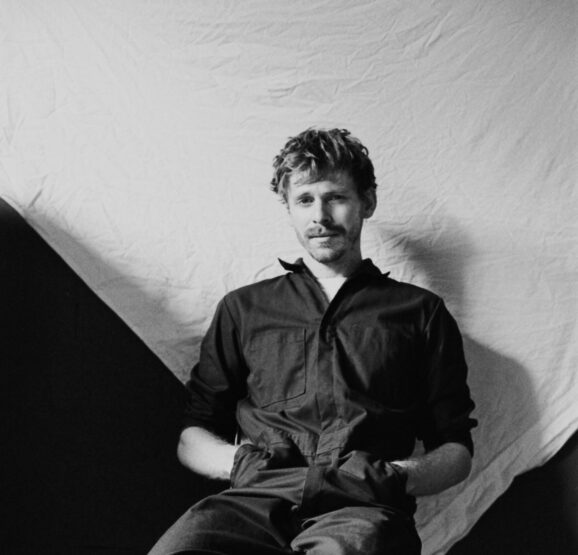Randy Ray
Hidden Flick: And The Wave Rolled Back
Randy Ray looks at the Japanese film Banshun, aka Late Spring.
Hidden Flick: Hidden Turkey – Volume 2
Randy Ray breaks his hiatus to discuss 1994’s Trapped In Paradise.
Hidden Flick: Special Edition
Randy Ray’s Hidden Flick column is back for a special holiday edition.
Hidden Flick: Rock ‘n’ Roll Drive-In Part Two
Randy Ray looks at music-related films in this special edition of Hidden Flick.
Hidden Flick: Air
Want a movie to add to your NetFlix Queue? Randy Ray tells you why Vanishing of the Bees is your huckleberry.
Hidden Flick: Sea
The water encapsulates so much of all that is life and all that dominates our planet and all that swallows up our existence and makes it pure and deep and real that one can easily forget that the sea is a very lonely place for a reason. Being at the top can have its misgivings as only those who have occupied its desolate throne can attest.
And the water runs through all, encapsulates everything that we are, and hope to be, runs around in circles, bends upwards, twists downwards, explores ‘neath the shallow waves until it stops somewhere for a brief moment before daylight, sunlight, washed-out light beckons from upwards (or is it down?), and life races forth, to replace the bends in the darkness, cradling one’s amnesiac head, searching for the limbs of some weird aura thief. Honey spills from the tree, onto a racing body of water, and it disappears like all life.
Up above on the surface, one dwells in the sense of self-importance, inner ambition, outer rage, in betwixt some sort of answer hiding in many questions. Meanwhile, in the deep blue sea, nothing seems to matter quite like that—as the universe expands outwards, inevitably to disappear, or, quite contrarily, to contract back into the Big Crunch, seeking nothing, pulling all that it once was into a singular focal point—OK Computer wedded with In Rainbows washes ashore to herald a twin-side masterpiece as time marches on—life serves no purpose whatsoever other than to see what can endure…and what cannot.
In Luchino Visconti’s La Terra Trema, a fisherman and his family, are washed ashore by reality, and within its 165 minutes of melancholic sorrow and remorse is the dawning specter of doom. But one would be hard-pressed to see the film as JUST that. And, considering that we are about to hit the end of a season in which every little hidden piece of the human soul has been dissected and tossed out like some giant whale carcass, one can see the light in the darkness, the glimmer of faith in something; indeed, some hope.
READ ON for more on this week’s Hidden Flick – La Terra Trema…
Hidden Flick: Land
Crossing back into time, one feels an almost drifting sense of purpose; fleeting, at best, but often wandering outwards, amidst some other surreal force; constantly, persistently pulling and pushing one onto a destiny which is always in reach, but seems so far away.
The human pursuit for land and resources has reached an almost epic battle point, prefacing some sort of almighty negative spin which has neither a mysterious conclusion, nor seems inevitable. Let’s face it, in a conflict of species versus planet, well…species would lose, wouldn’t it? Is the earth a species? Are we? Or, are we some sort of hodge podge, some mixture of the tease, some amalgamation, a wolfman’s brother, forged by the mind, the third eye of some unseen extraterrestrial force? Is this land we inhabit real?
In Carroll Ballard’s modest 1983 masterpiece, Never Cry Wolf, one feels an almost intangible pull towards the truth on a journey of modern man versus ancient beast. Scripted by Curtis Hanson, Sam Hamm, Richard Kletter and Ralph Furmaniak, and based upon the autobiography by conservationist Farley Mowat, the power of the film rests in the formidable work of actor Charles Martin Smith. Smith has the unlucky task of making his performance blend with the natural skills of his non-human thespians, the wolves, caribou and critters, effortlessly telling their parallel tale along with the straight narrative. Smith also redefines what it feels like to be a stranger in a strange land. His epiphany, through his acting—spoken word, quiet gesture and dawning wisdom—of what humans have become, is sobering to the core in this edition of Hidden Flick. READ ON for more on this week’s Hidden Flick…
Hidden Flick: Thousand Barefoot Children
Rain Delay: The current Hidden Flick edition was delayed two weeks due to an onslaught of rain: A ladder leading from a garden to a spring, we sit on a branch and ask questions to a pool of water: “In the whirlpool of darkness, can you see the light? Do you ever get thirsty? Do you love the fish? How old are you? Do you get younger each time it rains? Does the rain come from you, or back to you? Do you ever feel old? Are you fond of algae? Do you prefer fishermen or sailors? Are you open? Are you friends with the forest? Are you enemies of the night? Do you prefer bright or harsh? Do you write and sing? Can you hear music? Visions of Johanna? Do you play instruments that dance on the forest floor so the animals will be entertained? What came first—land, air, or sea? Are you an island onto yourself? Can you see me? Can you be like me? Can you go away when you dream, or are you always self-aware?”
We salvage an answer or three, and wander onwards, climbing further, always climbing, down dark, treacherous paths, sifting through false clues, rummaging through the dreams of yesterday, swimming in the daunting mists of the abyss; lost, we wander downwards, ever onwards, wandering spirits as we gaze below, down into the valleys of the soul.
Sifting through the wreckage, we ponder a thousand barefoot children, bereft of disease, but waiting for opportunities that never come. Privilege is not always a given in this life, and when one seeks to understand why some children persevere and conquer life’s challenges, while others fail, and fall from grace, never to rise again, one must comprehend the simple truth that, whereas the rain does come down, shooting water bullets in torrential sheets of violence, it isn’t necessarily always such a bad thing.
In Cary Joji Fukunaga’s seminal 2009 film Sin Nombre, or Nameless, as the title is translated in English, the young step away from the machine, and create their own society based on a strict allegiance to brotherhood, a code of honor and an unbreakable bond. Alas, even a close-knit group of like-minded individuals cannot save all the children from the paths that either define or deflect the growth of their individual characters.
READ ON for more about Cary Joji Fukunaga’s Sin Nombre…
Hidden Flick: The Mountains In The Mind
In the end, it is not our minds that fail us, but our hearts.
Indeed. The resolve to hold onto one’s convictions can be a very tricky thing. Once faced with death, one is apt to just give up, and run towards safety. After all, isn’t life itself preferable to certain dissolution? But what if one has had a vision? Ahh…tricky, yes. This little Flick ditty is dedicated to those who must do something, never expecting to get paid, or rewarded in any way, but doing it because they have to, they must, they need to fulfill some sort of higher purpose—indeed, the resolve to hold onto one’s convictions.
In Carl Theodor Dreyer, the cinema gained not only an original visual eye, but one gained a sometimes rather surreal look at what drove motivations, what kept focus, what swelled the heart of the beast within. Floating away, skin is temporary, but the soul shows the true power, does it not? Or, is that an illusion, too? Idea to material mist to oblivion?
Dreyer’s greatest treat for the mind’s eye may have been Vampyr with its otherworldly imagery and performances, but nothing can quite compare to his tour de force, which is rightfully heralded as one of the outstanding works of the silent film era. Released in 1928, it was almost lost to the hourglass of the modern age, but has avoided complete obscurity. The film also contains the hidden secret for all truth-seeking thespians—an ethereal and beautiful performance comes from within; specifically, the eyes.
READ ON for more about this week’s Hidden Flick…












